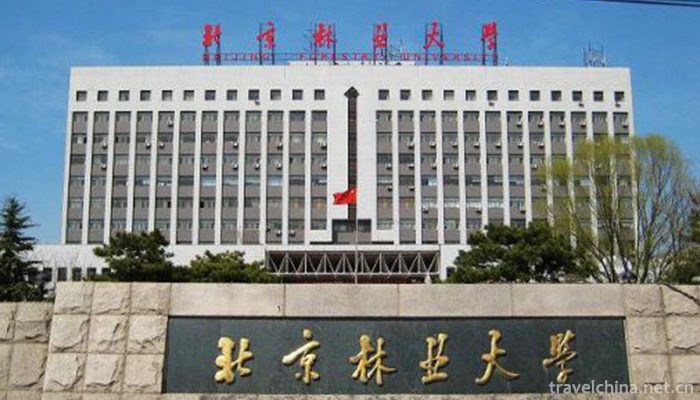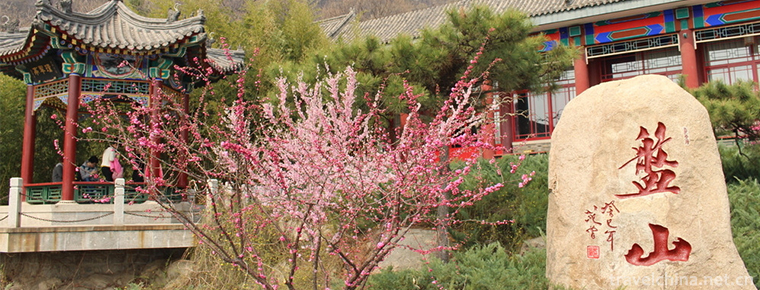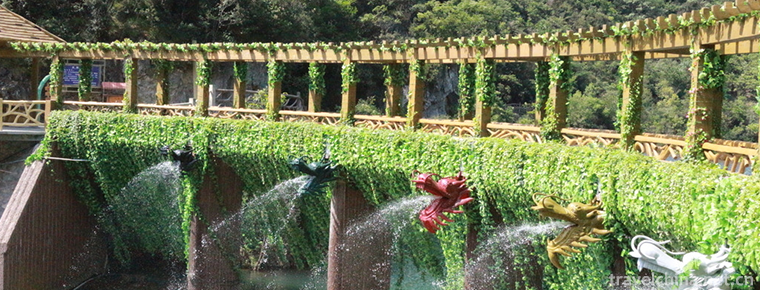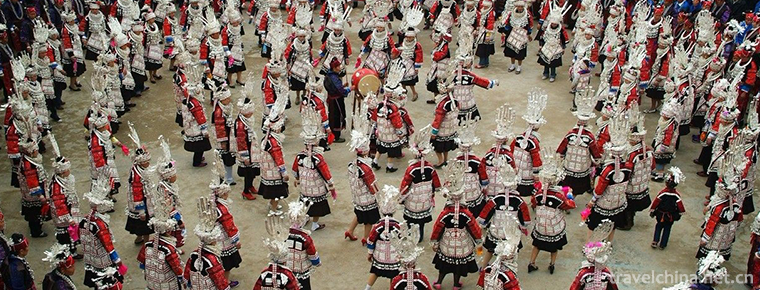Beijing Forestry University
Beijing Forestry University
Beijing Forestry University is a national key university directly under the Ministry of Education and jointly established by the Ministry of Education and the State Forestry and Grassland Administration. The history of school education can be traced back to the agricultural science and forestry subjects of Jingshi University Hall in 1902. In 1952, the Department of forestry of Beijing Agricultural University was reorganized and merged with the Department of forestry of Hebei Agricultural College to establish Beijing Forestry College. In 1956, the Department of Gardening, Beijing Agricultural University, and the Department of Architecture, Tsinghua University were joined. In 1960, it was listed as a national key university, and in 1981 it became the first batch of universities with the right to confer doctoral and master's degrees. In 1985, it was renamed Beijing Forestry University. In 1996, it was listed as the first batch of "211 Project" key universities. In 2000, it was approved by the Ministry of Education to set up a pilot graduate school, and in 2004, it was formally established. In 2005, he obtained the qualification of undergraduate self-selection and admission. In 2008, the school became a pilot University of the national "Advantage Discipline Innovation Platform" construction project. In 2010, it was supported by the Ministry of Education and the State Forestry Administration. In 2011, it participated in the formation of Beijing University of Science alliance with 10 other universities with industry characteristics. In 2012, China took the lead in setting up the first forestry Collaborative Innovation Center - "efficient cultivation and utilization of forest resources" collaborative innovation center. In 2016, the school "Forest Molecular Design and Breeding High-quality Innovation Center" was selected as the second batch of high-quality innovation centers in Beijing. In 2017, the school was selected as one of the world's first-class discipline construction universities, and forestry and landscape architecture were included in the list of "double-class" construction disciplines. In 2018, five disciplines of our university entered the top 1% of ESI in the world.
The school is based on biology and ecology, featuring forestry, landscape architecture, forestry engineering, grassland and agroforestry economic management. It is a national key university with coordinated development of agriculture, science, engineering, management, economics, literature, law, philosophy, education and art. The school is a university authorized by the Academic Degree Committee of the State Council and the Ministry of Education to examine and verify the qualifications of professors on its own. It is also a university authorized by the Academic Degree Committee of the State Council to set up two-level disciplines of doctor's degree and master's degree and interdisciplinary disciplines independently. After the fourth round of discipline evaluation in China, forestry and landscape architecture are two top construction disciplines in A + rank. The school has 16 colleges, 61 undergraduate majors and directions, 72 master's enrollment disciplines and 30 doctoral enrollment disciplines, 7 post-doctoral mobile stations, 9 doctoral degree authorization points for first-level disciplines, 24 master's degree authorization points for first-level disciplines, 2 master's degree authorization points for second-level disciplines and 16 professional master's degrees. Categories: 1 national key disciplines (including 7 national key disciplines of secondary disciplines), 2 national key disciplines of secondary disciplines, 1 national key disciplines (cultivation), 6 national forestry and grassland bureau key disciplines (level I), 3 national forestry and grassland Bureau Key Cultivation disciplines, and 3 Beijing key disciplines (1) Grade I (including key cultivation disciplines), four key disciplines in Beijing (Grade II), and one key interdisciplinary discipline in Beijing.
The school has formed the idea of "knowing mountains and rivers, trees and trees" and has trained more than 100,000 senior professionals and a group of foreign students, including 15 academicians of the two academies and a large number of outstanding scientific and technological experts and managerial personnel, who have made outstanding contributions to forestry and economic and social development in China. 。
As of December 2018, there were 25 347 students in the school, including 13 309 undergraduates, 5 931 full-time postgraduates, 356 on-the-job postgraduates and 5 751 continuing education students. There are 1888 faculty members, including 1204 full-time teachers, 302 full-time professors and 541 associate professors. Three academicians from the Chinese Academy of Engineering, three from the "Thousand Persons Program" of the Ministry of Central Engineering, one from the "Ten Thousand People Program", one from the national teaching faculty, three from the scientific and technological innovation leader, one from the philosophy and Social Sciences leader, two from the top young talents, one from the state-appointed experts, and seven from the "Yangtze River Scholar Award Program" of the Ministry of Education. There are 1 chief scientist in 973, 1 chief expert in 863, 1 chief scientist in major projects of the National Social Science Fund, 10 candidates in the National Million Talents Project (Million Talents Project in the New Century), 1 cultural celebrity in the Ministry of Publicity and Propaganda and 1 person in the "Four Group" of Talents, and 1 young and middle-aged scientific and technological innovation leader in the Ministry of Science and Technology. ” Two people, one of the top young professionals of national environmental protection, six of the winners of the National Outstanding Youth Science Foundation, five of the winners of the National Outstanding Youth Science Foundation, eight of the winners of the Chinese Youth Science and Technology Award, one of the winners of the Chinese Young Women Scientists Award, and one of the 100 winners of the Beijing Science and Technology Award. One leading person, one outstanding young person in Beijing, one outstanding young person in Beijing, one top young person in Beijing Highly Creative Talents Support Program, 50 selected persons in Beijing University Youth Talents Program, 27 selected persons in Beijing Excellent Talents Support Program, 8 experts with outstanding contributions from the state, 23 experts with outstanding contributions at provincial and ministerial levels, and enjoying the special features of the government Special allowance experts 146, Ministry of Education "Innovation Team Development Plan" 3. Teachers have won many awards, including one national innovation prize, two He Liang Holi Science and Technology Progress Prize, one international environmental outstanding contribution prize, one Luc Hoffmann Wetland Science and Protection Prize, three national outstanding scientists and technicians, two national model teachers, three national outstanding teachers and one national outstanding teacher. One was awarded the Beijing People's Teacher Award, 25 were awarded the Beijing Famous Teacher Award, 2 were awarded the Young Famous Teacher Award and 2 were awarded the National Famous Forestry Teacher Award.
The school attaches great importance to teaching work, implements tutorial system and major-minor system. It has a variety of training modes of top-notch innovative talents and compound talents, such as national science base, national excellent agricultural and forestry talents training plan, Liang Xi experimental class, innovative experimental class and Sino-foreign cooperative school. The school has won three first-class awards, seven second-class awards, one excellent award and 51 provincial and ministerial awards for teaching achievements. Five doctoral dissertations were selected as "National Excellent Doctoral Dissertations" and five doctoral dissertations were selected as "Beijing Excellent Doctoral Dissertations". Fifty-eight postgraduates have won gold medals in IFLA-UNESCO, International University Architectural Design Competition and Sino-Japanese-Korean University Landscape Architectural Design Competition. In recent three years, the employment rate of undergraduate graduates is over 94%, and that of postgraduates is over 96%.
School scientific research and technology platform construction has strong strength and fruitful results. There are 43 national, provincial (ministerial) level key laboratories, engineering centers and field platforms. Among them, 1 National Center for Flower Engineering, 1 National Engineering Laboratory for Forest Breeding, 1 National Field Observation and Scientific Research Station, 1 National Research and Development Center for Energy and Non-grain Biomass Materials, 1 International Science and Technology Cooperation Base for Forestry Biomass Energy, 2 National Science and Technology Demonstration Zones for Soil and Water Conservation and 2 Key Practices of the Ministry of Education Three laboratories, three engineering centers of the Ministry of Education, seven key laboratories of the State Forestry and Grassland Administration, three engineering and technical research centers of the State Forestry and Grassland Administration, one quality inspection center of the State Forestry and Grassland Administration, six field observation and research stations of the State Forestry and Grassland Administration, one Beijing Laboratory, one Beijing Gaojingjian Innovation Center and one North China Beijing Key Laboratory 8, Beijing Engineering and Technology Research Center 3. Since the Twelfth Five-Year Plan, the school has won eight national science and technology awards, including five second-class awards for national science and technology progress, three second-class awards for national technology invention, and 62 provincial and ministerial science and technology awards. Published by the first author, 5424 papers were collected by SCI and 2610 papers by EI. They are responsible for major scientific and technological projects such as national key R&D plan, National Science and technology support plan, 863 plan and key projects of National Natural Science Foundation. The total amount of research funds received is 1.97 billion yuan.
The school actively promotes international cooperation and openness in running schools. It has established cooperative relations in education and science and technology with more than 110 institutions of higher learning, scientific research institutes and non-governmental organizations in more than 30 countries and regions. Since 2005, the Ministry of Commerce has been undertaking foreign aid training projects every year, training nearly 600 senior managerial personnel and technical backbone in forestry in more than 70 developing countries; holding more than 50 international academic conferences, receiving more than 1000 foreign experts and scholars, sending a large number of teachers abroad to exchange and cooperate, and implementing more than 40 international cooperation projects. Jointly with the University of British Columbia in Canada, it has organized a cooperative school-running project for wood science and engineering and biotechnology specialties, and has carried out a number of joint training projects with universities in the United States, France and other countries. The Asia-Pacific Forestry Education Coordination Mechanism Office was set up in the school, which has set up a new platform for the internationalization of the school. In 2016, the school became a member of the Silk Road Agricultural Education and technology innovation alliance, and actively exchanges and cooperation with colleges and universities along the "one belt and one road". The school actively carries out exchanges and cooperation with Hong Kong, Macao and Taiwan, and has established partnerships with many universities in Hong Kong, Macao and Taiwan. The school is a scholarship from the Chinese government, a scholarship from the Ministry of Commerce, a scholarship from the Beijing municipal government, a special scholarship for "one belt and one road" in Beijing, and a scholarship program for the Asia Pacific forest organization. At present, nearly 300 foreign students from more than 50 countries are studying undergraduate, master's, doctoral and Chinese at school, of which the proportion of students with academic qualifications is more than 80%.
The existing campus area of the school headquarters is 696 mu, the experimental forest farm of the school covers 12480 mu, and the total area of the school covers 13176 mu. The building area of the library is 23400 square meters, with 190.72 million books, 48900 GB of electronic documents and 70 kinds of databases. The digital campus network of "Gigabit backbone, part of Gigabit to desktop" has been built.
At present, the aim of the school is to run higher education with people's satisfaction. According to the "three-step" strategy of the new era put forward by the 11th Party Congress of the school, the school comprehensively implements the Party's educational policy, opens a new journey of Beilin's rise, and strives to build Beilin into a world-class Forestry University rooted in China.
(Statistics up to 31 December 2018)


Beijing Forestry University
-
Changbai Mountains
Changbai Mountains are the birthplace of the Yalu River, Songhua River and Tumen river. It is the birthplace of Chinese Manchu and the sacred mountain of Manchu culture
Views: 237 Time 2018-10-30 -
Tianjin Panshan Scenic Area
Tianjin Panshan Scenic Area, located 15 kilometers northwest of Jixian County, Tianjin City, covers an area of 106 square kilometers
Views: 226 Time 2018-11-24 -
Wulong River Scenic Spot
Wulong River Tourism Scenic Area will soon be promulgated as a national scenic spot and a national natural forest reserve. The main river in the scenic spot is Wulong River
Views: 166 Time 2018-12-22 -
Hepeishan National Forest Park
Hepeishan National Forest Park is located in Zouping County, Binzhou City, Shandong Province, at the junction of Zouping County and Zhangqiu County. The total area of the park is 480 hectares
Views: 147 Time 2019-01-13 -
Shanghai Changfeng Ocean World
Shanghai Changfeng Ocean World belongs to the world's largest aquarium chain brand of Merlin Entertainment Group, which is the first and second largest in Europe
Views: 244 Time 2019-03-17 -
Changying Century City
Changying Century City, located in Nanguan District, Changchun City, Jilin Province, was founded in 2003. It is a comprehensive tourist area integrating science and technology, adventure, performing a
Views: 288 Time 2019-03-17 -
Zhen Bei Tai
Zhenbeitai, World Heritage Site, National Key Cultural Relics Protection Unit. It is located on the top of Hongshan Mountain, 4 kilometers north of Yulin City, a famous national historical and cultura
Views: 254 Time 2019-03-17 -
Flower Drum Opera
Huagu opera, a kind of local opera in China, has the most identical names in the national local opera, usually referring to Hunan Huagu opera. Hubei, Anhui, Jiangxi, Henan, Shaanxi and other
Views: 176 Time 2019-05-04 -
Miao Sister Festival
Miao Sister Festival, also known as "Sister Rice Festival", is a traditional festival of Miao people in Laotun and Shidong areas of Taijiang County, Guizhou Province. It is held from March 1
Views: 145 Time 2019-06-05 -
Brick and plastic
Brick sculpture is the handicraft of folk craftsmen. It is made of mud into various animal models. Some of the images are realistic, but more are romantic and exaggerated ways of expression, the shape
Views: 147 Time 2019-08-10 -
Custom of mud fish
The custom of filling mud fish is a local traditional handicraft with a long history in Guangdong Province. It combines traditional handicraft weaving and fishing skills. However, even in Doumen, the
Views: 141 Time 2019-08-10 -
Han Xin
Han Xin (about 231 - the first 196). The Warring States period Han Xiang Wang Ji Kun Shu sun, in order to avoid the military strategist with the same name, Huaiyin Hou Hanxin Mixed up, historical book
Views: 182 Time 2019-09-07











